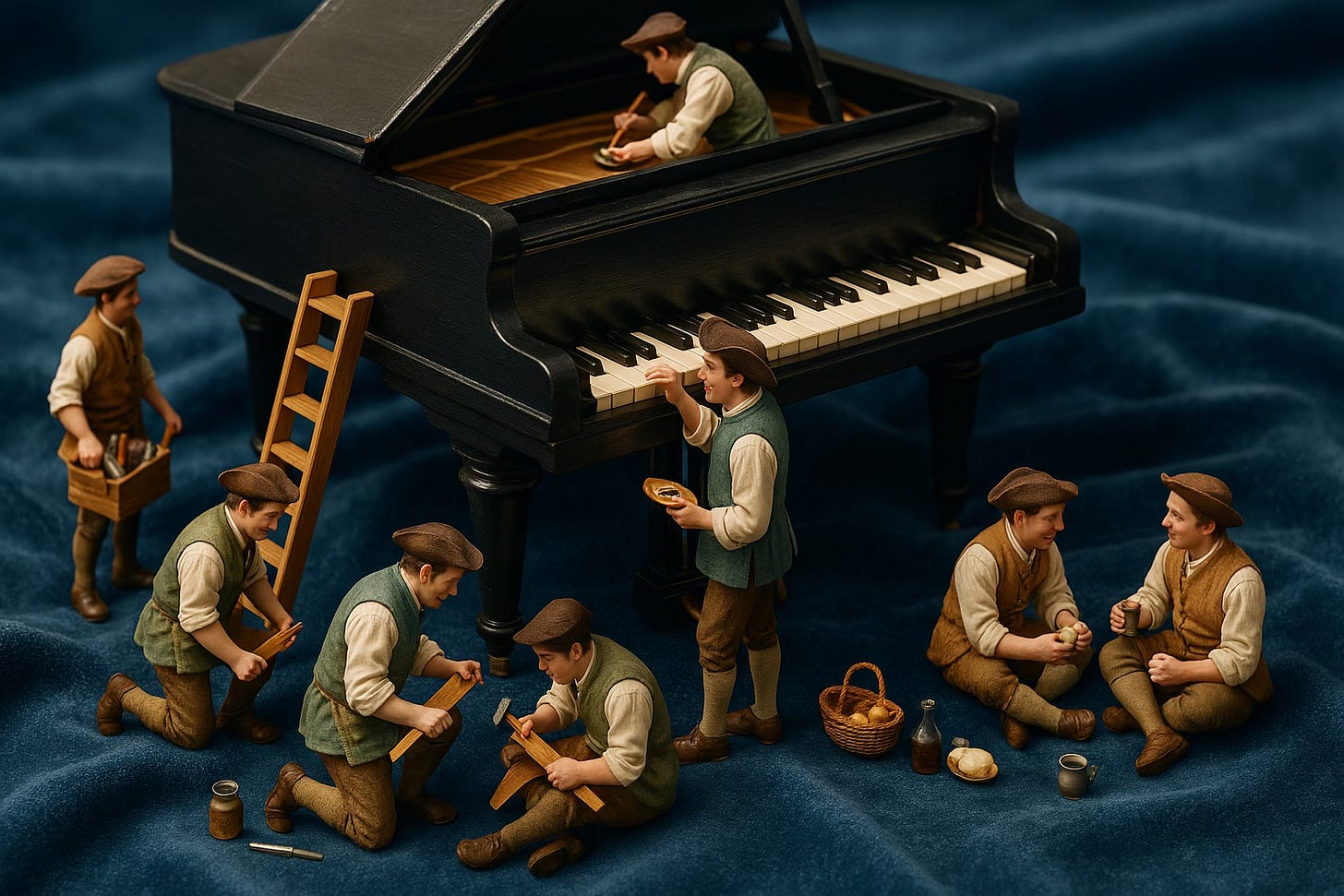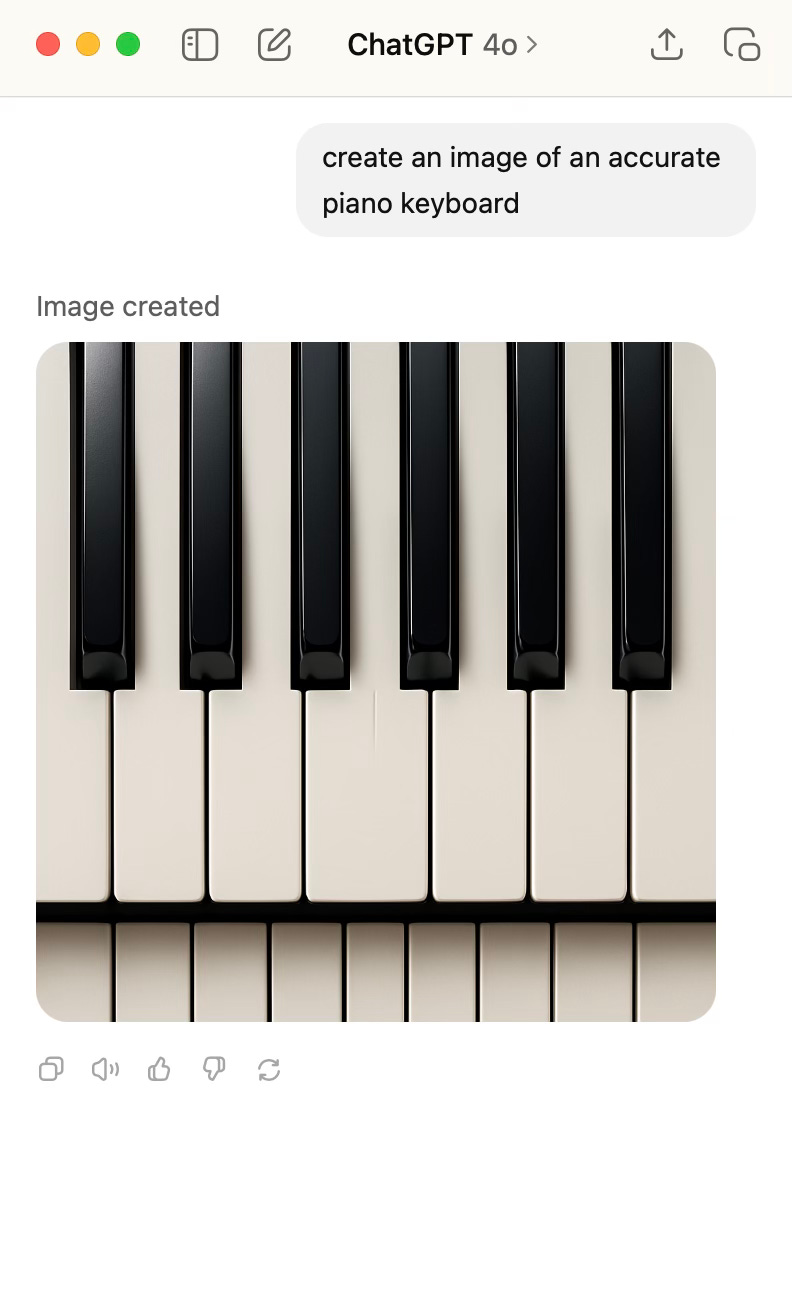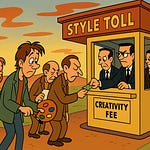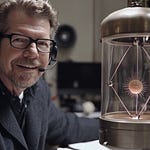The trouble started, as it often does, with a simple question: Can AI draw a piano? Not play one, or compose for one, or calculate its string tension based on humidity and smugness—just draw it. A straightforward line drawing, nothing fancy. Maybe even a baby grand with the lid up, if it was feeling confident. I typed it in like a fool: “Realistic piano keyboard.”
And what came back looked... musical, in the same way that a spaghetti strainer is a sort of hat. There were keys, yes. White ones. Black ones. But the pattern was wrong. Not subtly wrong, like a minor typo in a ransom note. No, these keyboards had groups of three black keys all in a row, followed by a lonely single one, then maybe four, then two, then nothing for a while. It looked like someone had scattered charcoal Chiclets across an ironing board.
At first, I thought it was just a one-time slip—that perhaps the AI had sneezed, or was still recovering from trying to draw a bicycle. But no. Image after image, prompt after prompt, site after site—none of them could do it. None. Not DALL-E, not Midjourney, not Stable Diffusion, not even that one that makes everything look like it's been dipped in lavender Vaseline. They all failed the black key test. The pattern—which should repeat, consistently, two black keys, a space, three black keys, a space, over and over—was scrambled like it had been designed by a committee of squirrels.
What makes this especially galling is that AI can do everything else. It can draw hands now. Not perfect ones, mind you, but good enough that you wouldn't scream and drop your sandwich. It can draw eyes that match. It can reproduce human teeth in a way that doesn’t look like the creature has been eating glass. It understands the subtle difference between a man smiling and a man baring his soul to the void. But ask it to render one of the most standardized objects in Western civilization, and it folds like a beach chair in a hurricane.
Which brings me to the real question: Why? The keyboard hasn’t changed in centuries. Not since the harpsichord, and possibly earlier. We’re not talking about a niche, boutique design here. This is not the clavichord of Upper Prussia. This is the piano. It’s everywhere. There are more keyboards in the world than there are people who understand what NFTs are. I’d wager there are more keyboards than there are tech workers. (Please do look that up. If it turns out to be false, I refuse to adjust this paragraph.)
What it suggests—and here is where I tiptoe into hysteria—is that nobody involved in training these models cared enough to get it right. Or worse: they didn’t know it was wrong. Somewhere out there is a neural net with a thousand warped pianos rattling around in its head, and no one has ever told it, "Excuse me, but black keys don’t grow in clumps like barnacles."
Now, of course, you can fine-tune a model. You can give it nothing but piano images—real ones, annotated lovingly by a former Juilliard student with too much time on their hands. You can babysit the process. You can correct it. But nobody does. Because nobody thinks to. Because the only people who notice are the people who know the pattern. And those people tend to either be professional musicians, former children forced into lessons by strict parents, or weirdos like me.
And you might say: “So what? It’s just a drawing. It doesn’t mean anything.” But I’d argue it does. Because if AI can’t get this right—this incredibly basic, visual pattern that hasn’t changed in hundreds of years and is printed on everything from coloring books to Christmas ornaments—what else is it quietly botching?
The answer, it turns out, is a lot.
Globes, for instance. Ask an AI to draw a globe, and it’ll give you something that resembles Earth only if you squint and believe. Continents melt into one another like they were painted in butter. Africa bulges. Australia is sometimes gone altogether. And don’t even try asking for a clock with Roman numerals unless you want to see what happens when time gets tipsy.
But the keyboard thing sticks with me. Because it’s so precise. So reliable. You can walk into any hotel lobby or church basement or kindergarten music room and see it: two black keys, three black keys. A pattern so simple, so utterly known, that it becomes invisible. Like the red line on a Solo cup. Like the side of a Lego brick. Like the dotted edge of a perforated coupon. These things don’t change. They don’t need to. And when they’re wrong, you feel it. You don’t always know why—you just do.
That, I think, is the crux of it. When AI gets a piano keyboard wrong, it’s not just a small error. It’s a betrayal of something we thought was universal. It’s a crack in the illusion. A little reminder that the machine doesn’t know what it’s doing. It’s just very good at guessing.
And yet, we’re told to fear it. Or worship it. Or, at the very least, feel vaguely threatened by its growing competence. It can pass the bar exam. It can write a poem. It can detect breast cancer better than most radiologists. It can even beat you at Go. But show it a keyboard, and it trips over itself like a toddler in roller skates.
I once spent an hour feeding prompts to various image generators just to see if any of them could do it. I tried every angle. “Photorealistic piano.” “Top-down view of a keyboard.” “Black and white digital piano.” I even tried “Steinway, taken with a Leica, high resolution, 88 keys, accurate.” Nothing worked. It was like asking a cat to draw a spreadsheet.
At one point, I got an image that looked promising. The lighting was dramatic. The textures were rich. The keys were smooth and glossy. And then I looked closer: 3 black keys, 3 again, then 4, then 1. A little black key tucked between each white key like a row of olives jammed into a baguette.
That was when I lost it. I slapped the table. I yelled at the screen. I may have thrown a coaster. My dog, thinking this was an invitation to play, leapt onto the couch and began barking furiously at the ceiling fan. It was a moment of shared madness.
And still, the machine had no idea what it had done wrong. Because no one ever told it. Because it doesn’t know what a piano is. It knows pixels. It knows tags. It knows a thousand examples of something that looks like a keyboard, many of them drawn by artists who themselves didn’t know or care that the pattern mattered.
I suppose what I want—what I truly, deeply long for—is a moment in the future when some AI researcher, perhaps while on a lunch break, stumbles upon this glitch. Maybe they play a little piano themselves. Maybe they remember their childhood lessons, the smell of wood polish and the terror of recitals. And maybe, just maybe, they see the mistake for what it is. Not a big deal, but a telling one.
Maybe they fix it. Maybe they add a note to the training data. Maybe they teach the model: this is not just a visual motif. It’s a symbol. It’s a constant. It means something.
Until then, I will continue to test the limits of our so-called intelligence. I will prompt. I will scowl. I will reject every keyboard that looks like it came from a Dadaist flea market. And when the day finally comes—when I type in “piano keyboard” and get back a real one, a true one, a beautifully standard row of two-black, three-black, two-black, like the teeth of some benevolent zebra god—I will know that we have finally arrived.
Not at AGI. Not at sentience. But at something better: a machine that can, at long last, pass as someone who once had a piano teacher with a ruler.
Copyright © 2025 by Paul Henry Smith
















Share this post